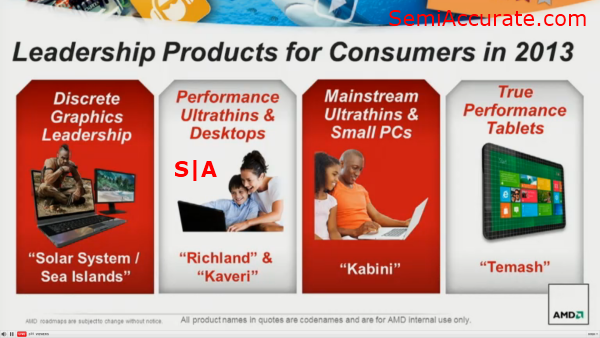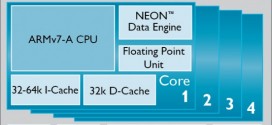It seems the quad-core AMD Temash A6-1450 APU doesn’t quite fit the tablet profile it was marketed for. Upon initial review it was discovered that the APU has decent performance at the cost of abnormally high power consumption.
Introduction of the APU
In 2006 AMD bought ATI, the then graphics chip designer- to integrate both a CPU and GPU into one general purpose super chip. This dream chip would be able to handle general purpose tasks and graphics heavy(high floating point) workloads.
In 2010 consumers could finally get their hands on the first gen of this complex fusion process. The first gen APU integrated both the CPU and GPU on the same die (piece of silicon) but unfortunately the south bridge was not integrated, so every APU needed an accompanying FCH (Fusion Controller Hub) to handle some i/o task (like USB and SATA). A few years later, complications and delays, we are at gen 1.5. This APU is similar to it predecessors, and the only additions are an increase in IPC (Instructions Per Clock – performance) and a fully integrated FCH.
AMD Temash Competition
AMD had been demoing this APU as suitable for tablets, they claimed it had a low TDP (Thermal Design Power – the minimum amount of cooling needed for operation) and decent battery life. They made it out like it was going to compete with Intel’s Atom in terms of power usage – at least that is what I thought.
Both Umpcportal and Notebookcheck had a look at the first sub-notebook (Acer Aspire V5 122p) to carry this APU and while there were a few peculiarities, the tests weren’t too far apart as to invalidate each other. The APU can use up to 15W when fully stressed, which by itself, doesn’t seem too bad until you find out that is almost the same amount of power that 2 Windows 8 tablets would use, combined. With that kind of power draw, don’t expect quad-core Temash tablets to last for more than 2-3 hours on average.
The performance fairs better, it has a 10-20% IPC advantage over its predecessors. When in turbo at 1.4GHz, the performance is quite close to the 1.7GHz AMD E2-1800 in single threaded(using one CPU core for a task) workloads. At 1GHz the AMD Temash processor actually outperforms the E2-1800 in a multi-threaded environment and uses less power.
When compared to Intel’s lineup, it handily beats the Intel Atom in every category(except power consumption). It uses less power while being very competitive with Intel Sandy Bridge Celeron (Intel budget chip) and is just a bit below Intel’s ULV (Ultra Low Voltage – low power/mobile) Sandy Bridge Core i3. Most new Intel Ivy Bridge based parts do outperform the Temash however. And it remains to be seen what the AMD Temash vs Haswell results will be.
Conclusion
From the reviews, I think there are many inefficiencies with the design. A good example -as pointed out by umpcportal- is that the keyboard backlight uses close to 1W of power. Another weird niggle was that both sites couldn’t figure out how or when the turbo was activates and the variances in speed skewed a few benchmarks. The AMD Temash APU itself seems very promising, the not yet released dual core might just hit the target. However, with Intel’s upcoming Atom revision and the steady encroachment of the ARM ecosystem, this might harm the APUs chances of design wins.
 TechDomino
TechDomino




